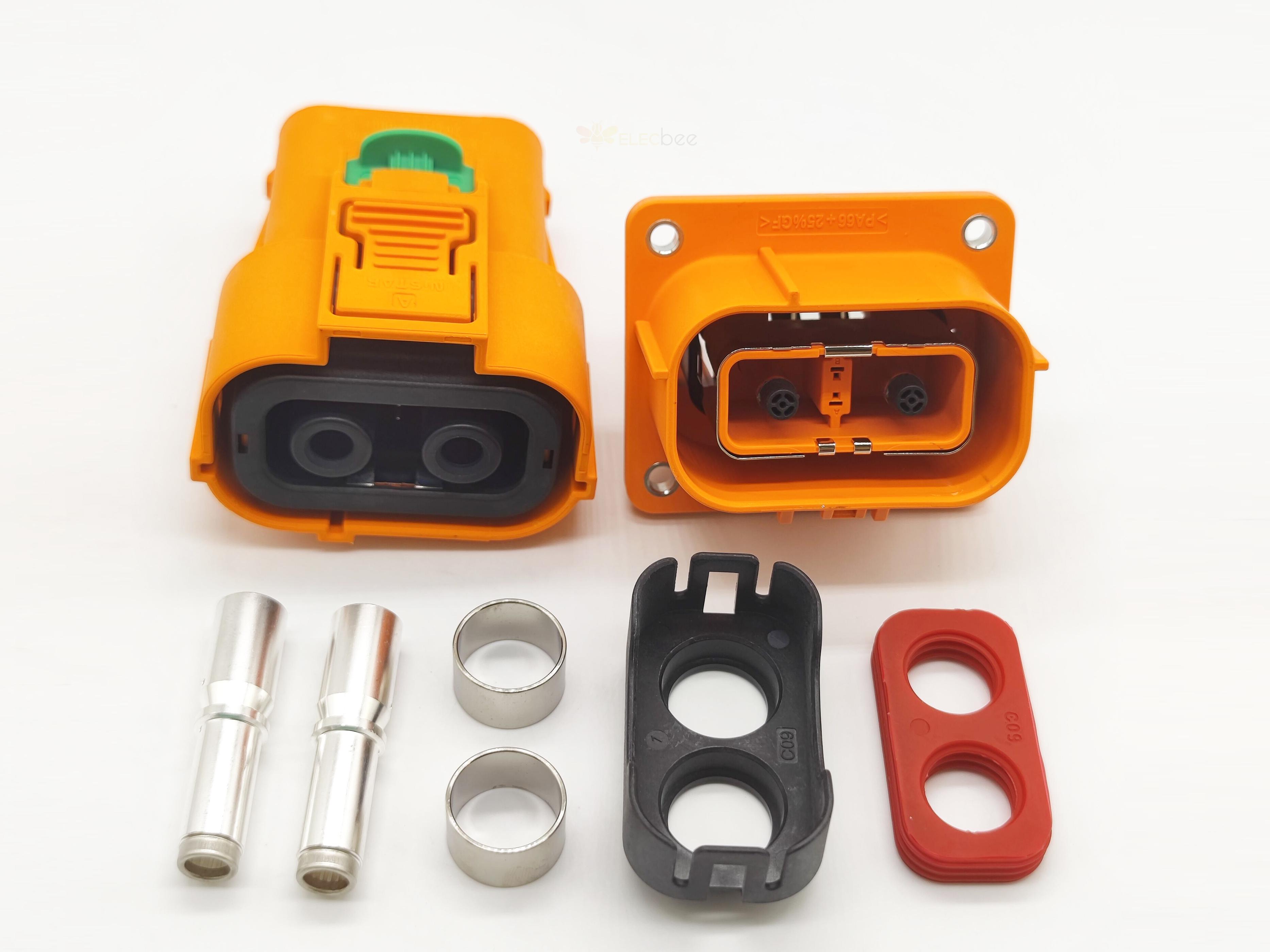Роль высоковольтной блокировки
Безопасный метод проектирования для контроля целостности цепей высокого напряжения с сигналами низкого напряжения. Теоретически низковольтный контур контроля подключается первым, а затем отключается, чем высоковольтный, и в середине поддерживается необходимое опережение. Продолжительность времени может быть определена в соответствии с конкретной ситуацией проекта, например, 150 мс, примерно в этом порядке. Конкретная форма реализации блокировки высокого напряжения, разные проекты могут иметь разные конструкции. Целью является электрический интерфейс, такой как высоковольтный разъем, который требует ручного управления для размыкания или отключения цепи.
Причины блокировки электромобилей высоким напряжением
С точки зрения безопасности системных функций каждый возможный риск должен контролироваться соответствующими техническими средствами безопасности, чтобы снизить вероятность возникновения риска. С этой точки зрения в схемотехнике используется блокировка высокого напряжения как мера безопасности для безопасности высоковольтной системы электромобилей.
Одной из точек риска для высоковольтных систем в электромобилях является внезапное отключение электроэнергии и потеря мощности. Есть несколько вещей, которые могут привести к потере мощности автомобиля, одной из которых является незакрепленная петля высокого напряжения. Блокировка по высокому напряжению может обнаружить этот знак и подать сигнал тревоги на контроллер транспортного средства до отключения питания высокого напряжения, давая системе транспортного средства время для принятия мер.
Еще одна точка риска для электромобилей — это неправильные действия человека, который вручную отключает высоковольтные соединения во время работы системы. При отсутствии конструкции высоковольтной блокировки к обоим концам точки разрыва в момент отключения прикладывается все напряжение цепи, что очень опасно для высоковольтных разъемов и других устройств, не имеющих возможности разрыва. Напряжение пробоя воздуха на короткое время тянет дугу между двумя устройствами, но может быть очень высоким, что может привести к травмам персонала и оборудования вблизи точки разрыва.
Существует несколько различных теорий о конкретной цели блокировки высокого напряжения. Некоторые люди считают, что блокировка высокого напряжения в основном играет роль перед транспортным средством на тележке. Если цепь оказывается неполной, питание системы не может быть включено, чтобы избежать несчастных случаев, вызванных виртуальным соединением и другими проблемами. Также считается, что блокировка высокого напряжения в основном играет роль в процессе отключения при столкновении, а сигнал столкновения запускает сигнал блокировки высокого напряжения для отключения системы. Однако в критической ситуации после коллизии шагов по отключению питания должно быть как можно меньше, а сигнал коллизии напрямую передается на VCU, что более логично.

Принципы проектирования высоковольтной блокировки
1. Контур HVIL должен иметь возможность эффективно, в режиме реального времени и непрерывно контролировать состояние включения-выключения всего контура высокого напряжения.
2. Все разъемы высокого напряжения должны быть оснащены механическими блокировочными устройствами, и HVIL сначала отключит разъем высокого напряжения, когда он будет отключен; При включении подключите HVIL позже.
3. Все высоковольтные разъемы нельзя подключать или отключать в нечеловеческих условиях.
4. Цепь блокировки высокого напряжения должна быть оснащена возможностью обнаружения петли высоковольтной линии непосредственно через BMS и непосредственного отключения петли высокого напряжения при особых обстоятельствах.
5. Когда HVIL идентифицируется как ненормальный, транспортное средство должно подать сигнал тревоги, например, световой индикатор прибора, звук или свет, чтобы предупредить водителя.
Принцип работы
При аварийном отключении точка контроля 1 передает результат обнаружения напрямую в BMS, которая отключает три высоковольтных реле. Когда разъем высокого напряжения двигателя и DCU хорошо подключены, реле низкого напряжения 2 подключено, и 12 В BMS подключены. Когда разъем высокого напряжения плохо подключен, реле низкого напряжения 2 отключается от BMS для реализации функции отключения питания. Другие компоненты HVIL проверяют свой статус Hvil, проверяя пункты 3, 4 и 5 соответственно, и возвращают отчет в VCU.
Преимущества и недостатки
Для каждого высоковольтного компонента проводится собственный тест HVIL. При возникновении неисправности ее легко устранить. Статус HVIL двигателя и DCU может напрямую определить, работает ли BMS, и снизить риск. Недостатком является добавление низковольтного реле для управления питанием BMS, что усложняет конструкцию жгута проводов и увеличивает общую массу жгута проводов. Кроме того, если низковольтное реле 2 подключено, VCU может только косвенно отключать высоковольтные компоненты через BMS.

Elecbee — компания, специализирующаяся на исследованиях и разработках, производстве и продаже электронных разъемов, адаптеров и антенн. Будь то технологии, исследования и разработки, производство или бизнес, она занимает лидирующие позиции в отрасли. Если вы хотите узнать больше о наших продуктах или вам нужна соответствующая помощь и поддержка, вы можете напрямую связаться с нашим техническим персоналом в режиме реального времени на веб-сайте или отправить электронное письмо по адресу service@elecbee.com. Все сотрудники Elecbee рассчитывают на сотрудничество с вами.






